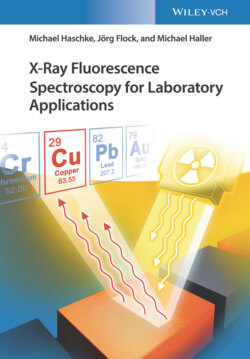Читать книгу X-Ray Fluorescence Spectroscopy for Laboratory Applications - Michael Haschke, Jörg Flock - Страница 43
3.4.4.4 Quality Criteria for Fusion Beads
ОглавлениеFusion beads of high quality are characterized by good transparency, a flat and smooth surface, and high homogeneity. Depending on the glass former, the fusion beads can be hygroscopic, i.e. their storage in desiccators is recommended if the samples should be available for follow-up measurements.
Figure 3.16 Glassy (a) and milky, too quickly cooled fusion bead (b).
The following defects can occur in fusion beads:
Crystallization can occur when a non-suitable flux for the analyzed material is used or when the cooling rate of the beads is too slow.
Cracking occurs if the internal stress in the bead is too high. These can be caused by unsuitable annealing procedures or due to small inclusions, for example, after crystallization in the glassy sample.
Bubbles can be generated if the material contains compounds that are volatile, if the material was not sufficiently dried, if the melt is too viscous, or if the melt captures air inclusions during the pouring process.
Distortion, in cases where the mold has deviations from the correct shape these deviations are then transferred to the fusion bead and can lead, for example, to uneven surfaces.
All these influences must be tested and optimized for the various sample materials as well as for the available equipment.
Examples of a homogeneous (a) as well as a milky and cracked (b) fusion bead that was cooled too quickly can be seen in Figure 3.16.
Fusion beads can increase the analytical accuracy by reducing the matrix interaction as well as the avoidance of mineralogical effects in the sample. For main and secondary components analyses errors down to <0.2% are possible, and for traces <1%. However, it also has to be noted that the manufacturing of a fusion bead requires a relatively high effort in time and money and that the detection limits are decreased by the dilution of the sample with the melting agent.
To take advantage of a higher accuracy, any contamination by touching of the measurement surface of the sample must be avoided. Otherwise, traces of Na, K, Cl, and others will be transferred to the sample, contaminate it, and consequently influence the analytical result. The same care has to be used for pressed pellets.
